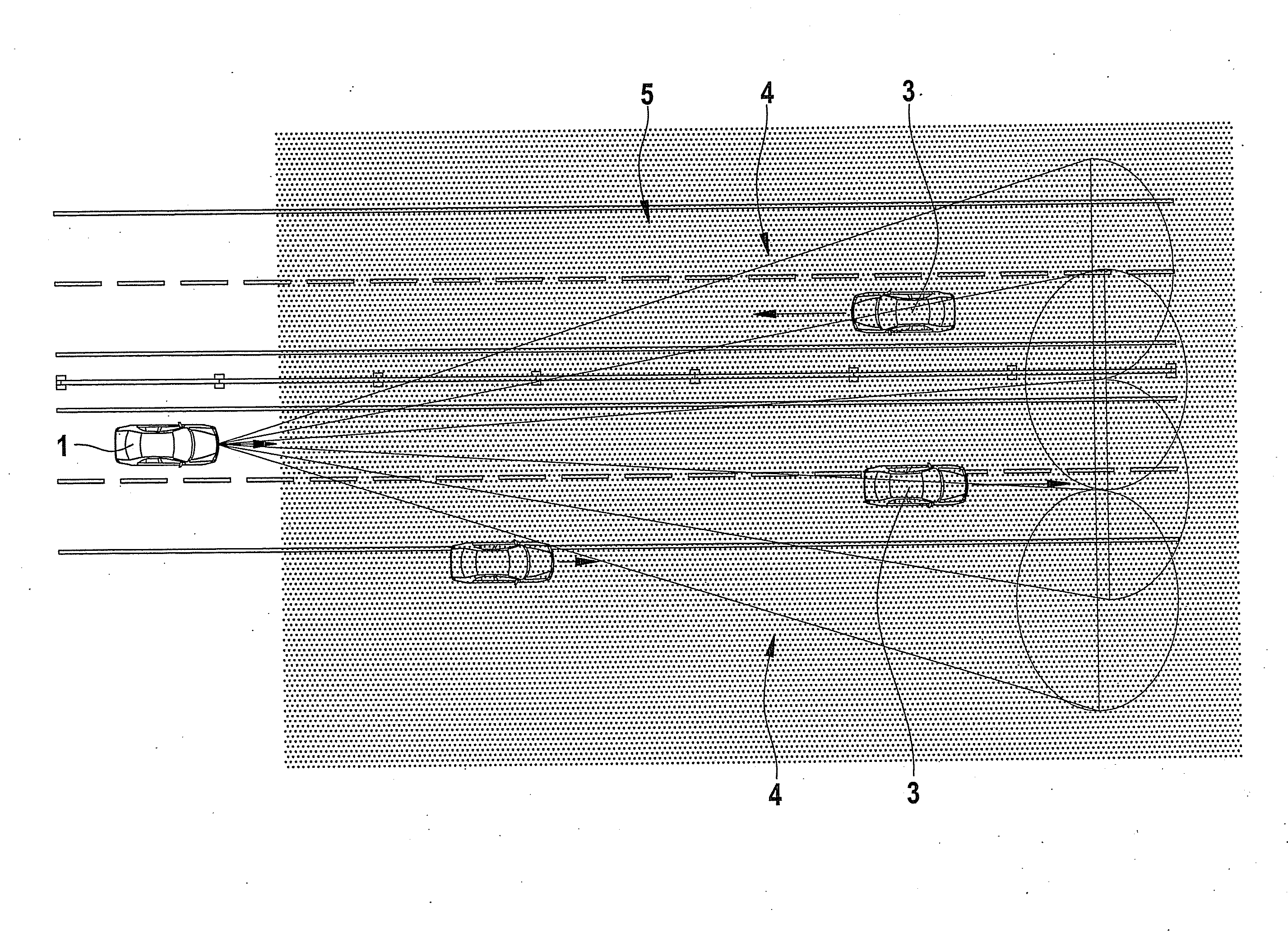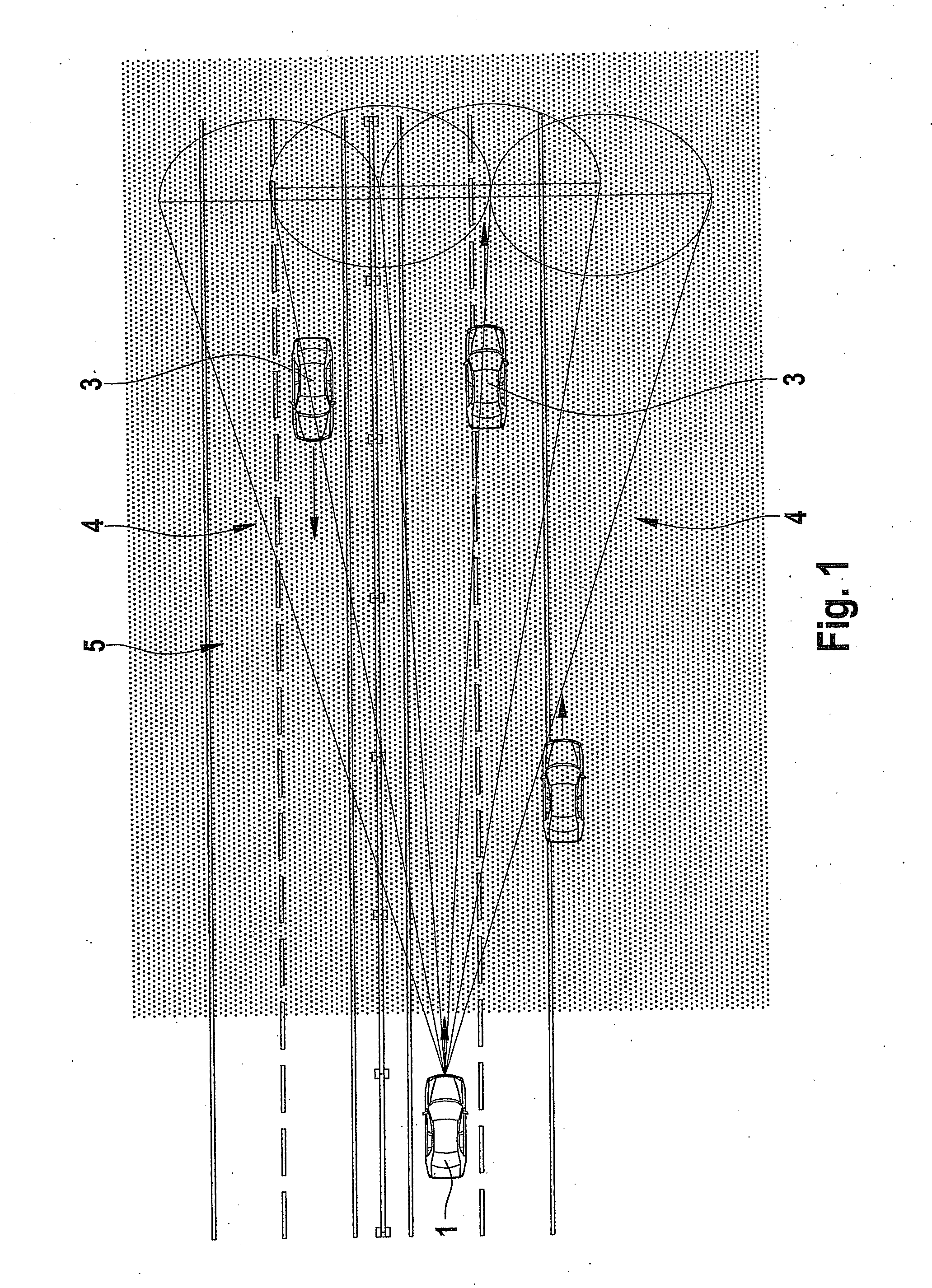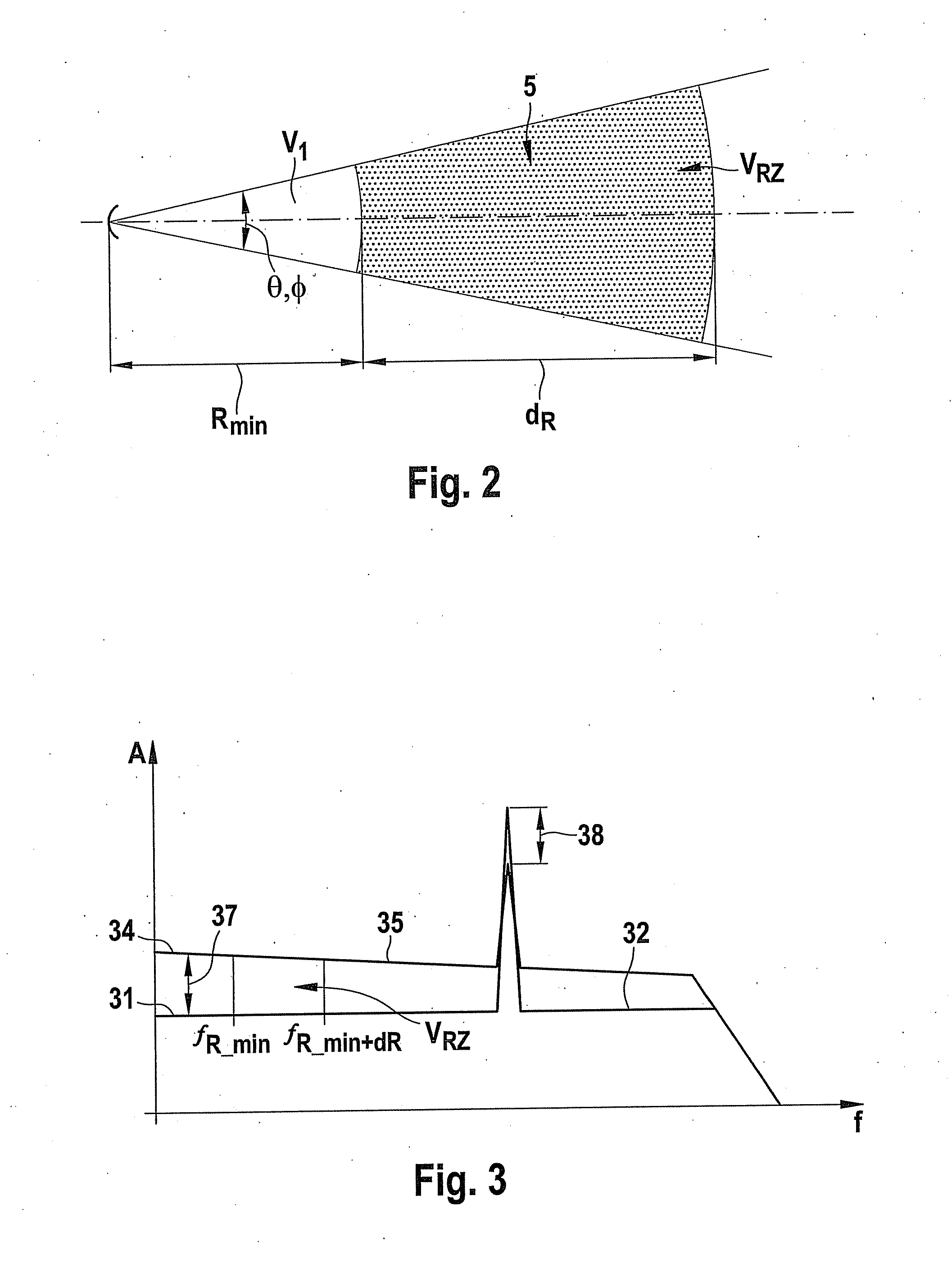Method and device for detecting precipitation by radar
- Summary
- Abstract
- Description
- Claims
- Application Information
AI Technical Summary
Benefits of technology
Problems solved by technology
Method used
Image
Examples
Embodiment Construction
[0031]FIG. 1 shows a use of a multi-beam automotive radar system in road traffic. A vehicle 1, also known as radar vehicle, is equipped with a long-range radar system (LRR). The radar system includes at least one transmitter or antenna, at least one receiver or sensor, and processing means, such as a microprocessor for evaluating backscattered radiation received by the receiver. Transmitter and receiver are expediently designed as an antenna, which carries out transmitting and receiving functions.
[0032]Vehicle 1 moves on a street that may be defined by delimitations, for example, in the form of a guard rail. Additional vehicles 3, which may be monitored by the radar of vehicle 1, move on the street. The radar of vehicle 1 emits a plurality of radar cones or antenna beams 4 to monitor vehicles 3. A region monitored by antenna beams 4 is permeated by precipitation, in this case by rain 5.
[0033]The precipitation's main direction of movement is orthogonal to the radar beams. In the exem...
PUM
 Login to View More
Login to View More Abstract
Description
Claims
Application Information
 Login to View More
Login to View More - R&D
- Intellectual Property
- Life Sciences
- Materials
- Tech Scout
- Unparalleled Data Quality
- Higher Quality Content
- 60% Fewer Hallucinations
Browse by: Latest US Patents, China's latest patents, Technical Efficacy Thesaurus, Application Domain, Technology Topic, Popular Technical Reports.
© 2025 PatSnap. All rights reserved.Legal|Privacy policy|Modern Slavery Act Transparency Statement|Sitemap|About US| Contact US: help@patsnap.com



